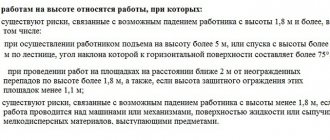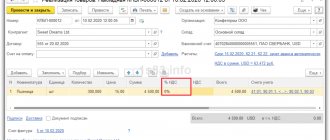The employee is engaged in work with hazardous working conditions. Is it possible to arrange a combination of positions (professions) for him in accordance with Art. 60.2 of the Labor Code of the Russian Federation, if work in a combined position is also associated with harmful working conditions (according to the results of the special labor assessment)? Will compensations and benefits (increased wages, additional leave, etc.) established as a result of the SOUT be provided to the employee only at the main place of work or both at the main place of work and at a combined position (profession)?
September 4, 2019
Having considered the issue, we came to the following conclusion: An employee engaged in work with hazardous working conditions has the right to perform such work in the manner of combining professions (positions). Guarantees and compensations due for work in hazardous working conditions are provided only at the main place of work.
Rationale for the conclusion: Combination of professions (positions) - performing, during the established duration of the working day (shift), along with the work specified in the employment contract, additional work in another or the same profession (position) for additional pay (Article 60.2 of the Labor Code of the Russian Federation). Part five art. 282 of the Labor Code of the Russian Federation prohibits performing part-time work in harmful or dangerous working conditions if the main work is associated with the same conditions. At the same time, by part-time work, the law understands that an employee, in his free time from his main job, performs other regular paid work for the same or another employer under a separate employment contract (Article 60.1 of the Labor Code of the Russian Federation). That is, the main difference between part-time work and part-time work is that part-time work is carried out in free time from the main job under another employment contract, and combining professions occurs during the working day for the main job within the framework of the same employment contract. Labor legislation does not contain a prohibition similar to that provided for in part five of Art. 282 of the Labor Code of the Russian Federation regarding the performance of work with harmful or dangerous working conditions in a combination manner. Therefore, an employee engaged in work with harmful or dangerous working conditions has the right to perform such work in the order of combining professions (positions) (see also the answers to question 1, question 2 and question 3 from the Rostrud information portal “Online Inspectorate.RF”). Please note that when combining professions (positions) - unlike part-time work - the employee is not assigned to another position, he is only assigned responsibilities for performing additional work for this position. Additional work is not fixed in the employment contract and is not guaranteed to the employee, since the assignment of additional work can always be canceled ahead of schedule at the initiative of the employer (part four of Article 60.2 of the Labor Code of the Russian Federation). When an employee is assigned additional work, his labor function (position in accordance with the staffing table, profession, specialty indicating qualifications; specific type of work assigned to the employee), specified in the employment contract as a mandatory condition, does not change. For combining professions (positions), the employee is entitled not to the salary for the position being combined, but to an additional payment to the salary for his (main) position, which is established by agreement of the parties to the employment contract, taking into account the content and (or) volume of additional work (Article 151 of the Labor Code of the Russian Federation) . It follows from the above that all guarantees and compensation provided by law related to the performance of work in harmful or dangerous working conditions (Articles 92, 117, 147 of the Labor Code of the Russian Federation) must be provided to the employee in the amounts provided for the position (profession) indicated in his employment contract. Work performed in combination should not be taken into account when determining the types and amounts of the specified guarantees and compensation. Thus, an employee who works in hazardous conditions in his main position and performs additional work in the same conditions as part-time work, guarantees and compensation for “harmfulness” are provided only at his main place of work (see also answers to question 4, question 5 and question 6 from the Rostrud information portal “Onlineinspection.RF”).
Answer prepared by: Expert of the Legal Consulting Service GARANT Naumchik Ivan
The answer has passed quality control
The legislation of the Russian Federation defines hazardous working conditions as working conditions that can harm human health and life. People working at such enterprises are entitled to benefits and allowances. Harmful conditions are working conditions in which a person is harmed to his body, has an adverse effect on the functionality of his organs and exacerbates chronic diseases. Not all citizens can work at such enterprises; it is necessary to pass a certain commission, which will give an opinion that this person can work in harmful conditions. Working conditions are divided into three categories, such as safe, in this production there is no harm to human health and life; harmful - this category provides for the possibility of contracting any disease and its further chronic development, and the last category is a dangerous production, in such production it is possible to receive injuries of varying severity, which in the future can lead to disability.
Classification of working conditions
The Law of the Labor Code of the Russian Federation defines a complete list of professions that have hazardous working conditions.
These include workers:
- coal industry;
- mining industry;
- abrasive and metallurgical production;
- electric power industry;
- chemical and petroleum industries;
- radio engineering, electrical and electronic production;
- geological exploration;
- microbiology;
- enterprises for the production of hydrometers and thermometers.
Harmful working conditions are determined not only by the list of hazardous professions, but also in order to determine whether this production is hazardous or not, it is necessary to carry out certification or a special assessment of production, only after this the enterprise receives the status of hazardous production, and employees at this enterprise are entitled to benefits, allowances and opportunities reduction of the retirement age.
Part-time work and harmful working conditions
An employee who works under an additional employment contract in his free time from his main job is considered a part-time worker. Part-time work can be both internal and external, it all depends on whether the employee works for one or more employers. But it is worth remembering that part-time work cannot exceed 4 hours a day. Part-time work does not limit a person in the number of combined professions, but the employment contract must indicate that the employee works part-time. Part-time work is not possible for persons under 18 years of age.
As for part-time work with hazardous working conditions, it is important to remember that combination of hazardous professions is prohibited. That is, if at the main place of work an employee works in hazardous conditions, then part-time work with hazardous working conditions is prohibited under the Labor Code of the Russian Federation. In order to avoid hiring a part-time person working in hazardous conditions, it is necessary to request a certificate from him about the place and conditions of his main job. If such a person is employed by the enterprise, then he must be dismissed in accordance with paragraph 11 of Article 77 of the Labor Code of the Russian Federation.
Enter the site
RSS Print
Category : Labor legislation Replies : 34
You can add a topic to your favorites list and subscribe to email notifications.
« First ← Prev.1 Next → Last (4) »
| Guest (guest) | |
| Hello. Please help us understand the situation. The employee works in his main profession + part-time job. A certification was carried out on working conditions and a harmfulness level of 3.1 was established both in the main profession and in the combination. Can an employee continue to combine a profession (if there is a part-time job, definitely no, that’s understandable), but what should he do when combining it? | |
| I want to draw the moderator's attention to this message because: Notification is being sent... |
| Guest (guest) | #2[70771] March 31, 2009, 7:30 |
Notification is being sent...
| Ciardi [email hidden] Belarus Wrote 23477 messages Write a private message Reputation: 3447 | #3[70852] March 31, 2009, 10:02 |
Notification is being sent...
| Mika [email hidden] Belarus, Minsk Wrote 484 messages Write a private message Reputation: 130 | #4[70858] March 31, 2009, 10:13 |
Notification is being sent...
| Ciardi [email hidden] Belarus Wrote 23477 messages Write a private message Reputation: 3447 | #5[70860] March 31, 2009, 10:19 |
"That is, it turns out that if the working hours when working with hazardous working conditions are normal (not reduced), then it is possible to work part-time in two hazardous jobs. I want to draw the moderator’s attention to this message because:
Notification is being sent...
| Fedora [email hidden] Belarus, Minsk Wrote 640 messages Write a private message Reputation: | #6[70863] March 31, 2009, 10:22 |
Notification is being sent...
| Guest (guest) | #7[70899] March 31, 2009, 11:44 |
Notification is being sent...
| Irina [email protected] Belarus Wrote 787 messages Write a private message Reputation: | #8[70915] March 31, 2009, 12:21 |
, reduced working hours for work with harmful and (or) dangerous working conditions, increased wages for establishing
additional payments for work under harmful and (or) dangerous working conditions
based on certification results
assigned to employees engaged in work with harmful and (or) dangerous working conditions for a full working day
. A full working day means performing work under harmful and (or) dangerous working conditions for at least 80% of the duration of the daily shift, work established by law.” I want to draw the moderator's attention to this message because:
Notification is being sent...
1. I’m growing wings, I’m tired of flying without a broom 2.Having heard the voice of your conscience, proudly tell it: “SO YOU ARE”!!! 3. All women live by the same motto: LOVE CANNOT BE USED... But where to put a comma, everyone decides for herself!!!
2.Having heard the voice of your conscience, proudly tell it: “SO YOU ARE”!!! 3. All women live by the same motto: LOVE CANNOT BE USED... But where to put a comma, everyone decides for herself!!! | Guest (guest) | #9[77082] April 21, 2009, 2:37 pm |
Notification is being sent...
| Guest (guest) | #10[77128] April 22, 2009, 5:50 |
Notification is being sent...
« First ← Prev.1 Next → Last (4) »
In order to reply to this topic, you must log in or register.
Registration of combination with harmful working conditions
The combination of an employee at an enterprise is possible both at the initial stage of hiring and in the further labor process; he can replace an employee who is on sick leave or on vacation. To do this, you need to complete the following documents:
- written consent to combine.
- additional agreement to the specialist’s employment contract, which defines:
- date of commencement of additional duties;
- the period for which the combination is established;
- position and job responsibilities that are additional;
- the presence of harmful factors of production in the combined position;
- procedure for additional payment for combination.
The order is signed by the manager and employee, as well as other persons mentioned in the document, for example, if the combination is internal.
The procedure for registering the combination, the contents of the agreement
To formalize the combination, the employee and the employer must enter into an agreement and issue an order on combining profession (positions)/on assigning additional work.
At the same time, an agreement on combining professions is not an analogue of an additional agreement to an employment contract, since based on the very meaning of work not provided for by the contract, it follows that such work should go beyond the scope of the employment contract and, therefore, cannot be reflected in the employment contract (after all an additional agreement is an integral part of the employment contract!), otherwise such work will already be provided for in the employment contract.











